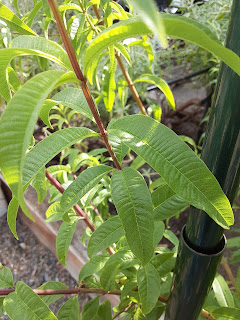 |
Day 1 of the veggie garden
|
My last post was made over 5 years ago. At the time, it didn't feel like I needed this blog anymore. So I started another one with a different focus, but that one didn't last long either. I wasn't feeling inspired anymore. I didn't feel like I had anything to say, anything worth sharing. Things felt...stagnant. Well, many things have changed since then.
As a cook, the source of my food has become more important to me as I get older and more experienced with cooking (and eating). To me, the connection between the garden and the kitchen table has never been more evident. Scooter and I make weekly trips to the local Farmer's Market, where I've found more aromatic herbs, juicier peaches, fresher lettuce, and tastier strawberries than I've ever been able to find in our local chain supermarket. To be fair, the supermarket has fine produce; what the Farmer's Market has is just better. As a bonus, I can also support the smaller farms and businesses in my area.
But relishing such delectable organic food got me thinking. My mother and I had always wanted to do a big vegetable garden that we would cycle crops through so we could harvest year-round. The thought of tomatoes, string beans, zucchini, lettuce, root vegetables, and others that we could grow and harvest ourselves was so very tempting. Since we both love to cook, it seemed like a no-brainer. The problem was finding the time to get the garden going and established. She was always doing something church-related, or chores around the house, or running errands with my dad. I had a full-time job, plus a year ago I started a teaching credential program. Neither one of us had the time or the energy to attempt such a project.
And then in March the world fell apart. The schools closed, so I suddenly found myself with some unexpected time on my hands. Everything else closed, so there was nowhere for us to go: no picnics at the park, no camping (or travel of any kind), no eating out. Everything. Stopped. It was a particularly difficult time for me. I missed my students dearly, I was worried about my dad (not related to COVID, but a story for another day), I was worried about Scooter who still had to report to work, shopping for food had suddenly become A Big Thing, and my mental health was starting to decline. Mom and I decided that now was the time for the garden. We needed something therapeutic, something positive we could do in the middle of all this negativity, and we would become more autonomous with sourcing some of our food. So we sketched out a plan, called up our local nursery--who was thankfully doing deliveries--and put in an order of veggies.
Back in April when we planned out the raised beds and planted all of our new, tender plants, we could not have foreseen the amazing things that have come out of this project. Every day in the garden has become a much-needed refuge, a chance to step back from the world and take a breath to regroup. We have poured hours and hours into our little oasis, and it has responded in kind. Our garden has become the perfect compliment to our mutual love of cooking, so my blog will be used to record our gardening and cooking "experiments." I don't work from a recipe much anymore, so I don't know if I'll be posting many. But I promise to share what I can on what I do in the kitchen and in the garden.
Step into my oasis.
A ogni uccello il suo nido è bello. Home sweet home.












